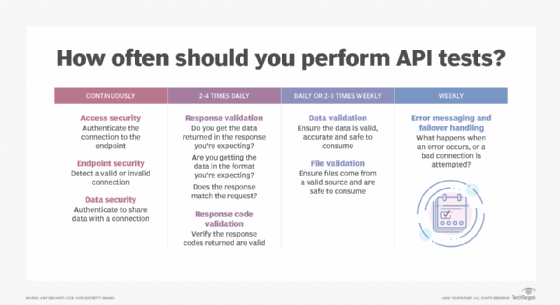
Getty Images
Insomnia vs. Postman: Comparing API management tools
Insomnia has a streamlined interface and focus. Postman has extensive features for end-to-end development. Choosing comes down to the team's needs and the project's complexity.
APIs are nearly ubiquitous with modern software and technology, so teams need an API testing tool that can reliably streamline development and ensure its reliability.
Insomnia and Postman are often the tools of choice when development teams are looking for an API testing platform. They aim to solve similar problems with slightly different UX, ecosystem and extensibility approaches.
But if they're so similar, does it matter which your team adopts? And if so, how do you choose the right platform for your team?
Breaking down Insomnia vs. Postman
Postman and Insomnia are powerful API testing and management platforms. Insomnia focuses on simplicity, performance and flexibility, which are great for solo developers or minimalistic environments. Postman emphasizes enterprise readiness and a wide selection of features, making it better suited for large teams and structured workflows.
Whether working individually or in teams, users can benefit from the tools' ability to streamline API workflows and simplify complex testing scenarios with minimal configuration. They enhance developer productivity and facilitate debugging, mocking, and sharing API requests and responses.
Despite their idiosyncrasies, Postman and Insomnia both help developers interact and test APIs across REST, GraphQL and other standards. Both tools use a visual interface to manage environments, and support scripting and automation with integrated support for open standards such as OpenAPI. Both tools feature secure handling of authentication and credentials with a substantial plugin-based ecosystem to extend capabilities.
Postman
Postman is a comprehensive, cloud-first platform with features for the entire API lifecycle, from design and testing to monitoring and documentation. It features real-time team workspaces, automated testing, detailed analytics and seamless CI/CD integration.
Insomnia
Insomnia, by contrast, is lightweight, developer-centric, and ideal for quick debugging and scripting. It supports extensive customization through plugins and an open source core, resulting in more control and speed. It stands out in use cases requiring minimal setup and a distraction-free UI.

Choosing between Insomnia and Postman
Selecting between equally viable options can be challenging. To simplify the decision, compare both tools using three core dimensions: control, collaboration and performance.
Control
Postman includes capabilities like schema versioning, environment variable encryption and audit logging. This makes it suitable for environments that demand compliance, traceability and regulatory audit capabilities. Its private API networks and SCIM-based user management give admins tight operational oversight.
Insomnia uses local or cloud storage options and self-hosted mocks. It gives developers more direct control over storage, but lacks enterprise-grade controls for access and policy. This is ideal for teams requiring on-premises setups or deeper system integrations. Insomnia's open source core can be self-hosted or modified, which is helpful for secure or air-gapped systems.
Collaboration features
Postman is well equipped with collaboration features such as granular workspace sharing, role-based access controls and syncing capabilities. Large teams can co-author and test APIs efficiently. Its versioning and comment threads streamline review cycles.
Insomnia doesn't have the same built-in collaboration features, fine access controls or live multiuser editing. Instead, it relies on cloud-based synchronization using Cloud Sync or a Git integration. What it lacks in collaboration features, it gains in being lightweight and fast without unnecessary bloat, which makes it perfect for smaller teams and solo developers.
Performance and speed
Insomnia's lightweight architecture results in faster startup and low-latency request handling, especially when working with a large workspace containing numerous schemas. It has a lower memory footprint than Postman, which can slow down as collections and team workspaces scale.
However, learning and managing a self-hosted version of the tool might require a higher baseline knowledge. On the other hand, Postman's visual UI and prebuilt templates can help new developers ramp up faster.
Alternative API management tools
Depending on your team's specific needs, other tools such as Hoppscotch, Paw for macOS and CLI-based HTTPie are worth considering. Remember, regardless of the tool you choose, they will all come with various tradeoffs in platform support, UX and collaboration features.
Postman and Insomnia are robust tools with overlapping capabilities and distinct strengths. The best choice depends on workflow preferences, project complexity, and whether collaboration features or simplicity and speed are needed more.
Editor's note: This article was originally published in 2023 and was updated in 2025 to expand coverage of Postman and Insomnia and provide guidance on when to choose each.
Priyank Gupta is a polyglot technologist who is well versed in the craft of building distributed systems that operate at scale. He is an active open source contributor and speaker who loves to solve a difficult business challenge using technology at scale.







